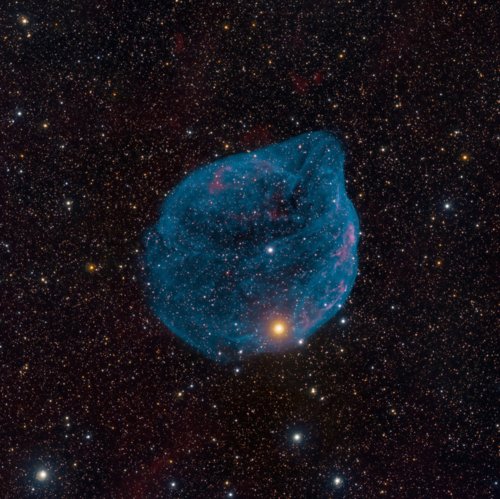

This celestial structure is located some 5,200 light-years away in the constellation of Canis Major, extending across an area that covers a full 2/3 degree in our night sky (whereas the moon only takes up 1/2 of a degree), or about 60 light-years in total.
The nebula – formally cataloged under the name Sharpless 308 (Sh2-308 or S 308 work as well) – was created and shaped by stellar winds blowing from a hot, unstable, but massive star known as a Wolf-Rayet star (dubbed HD 50896, also known as EZ Canis Majoris). It can clearly be made out in this image (its the blueish-white dot at the heart of the nebula).
It’s awe-inspiring to contemplate the fact that a single star stirred up so much commotion; a star that could fit within the nebulae it generated hundreds of thousands of times over.
Generally, Wolf-Rayet stars are at least 20 times more massive than our sun, a yellow dwarf, but they burn through their supply of hydrogen for nuclear fusion at an unbelievably fast rate, resulting in them exploding as supernovae in mere millions of years. Prior to transitioning to the final phase of stellar evolution, stellar winds streaming from the star create bubble-shaped cavities, usually comprised of ionized gases (in this nebula, the blueish hues can be attributed to ionized oxygen atoms).
See a larger image here.